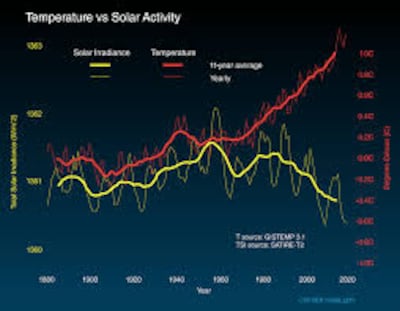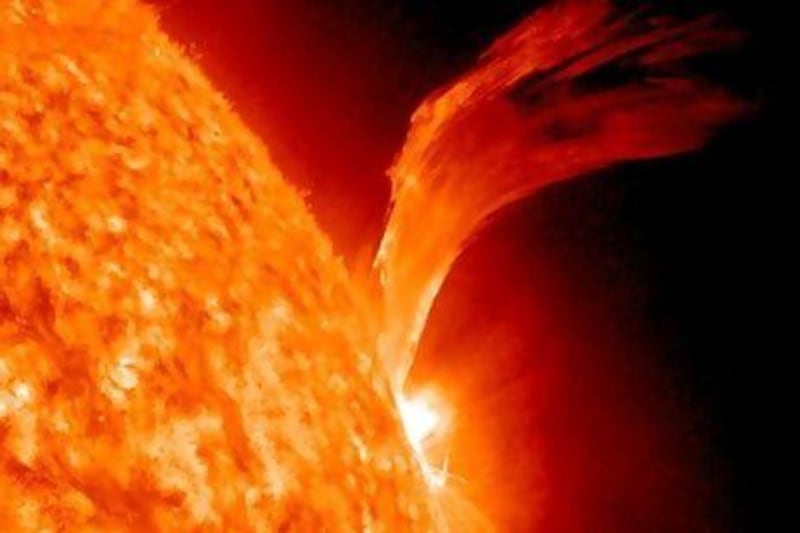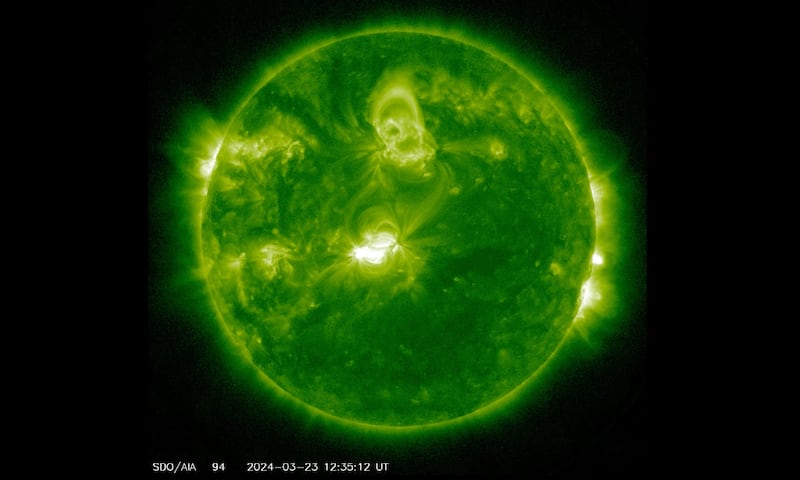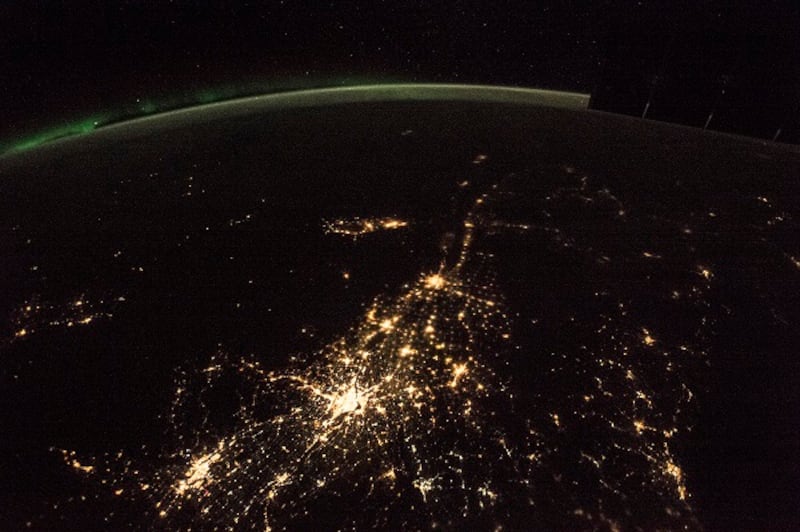At the heart of the solar system lies the Sun, a constant source of light and warmth essential for life on Earth.
But beyond its life-giving rays, it can also have a brutal impact on the outermost layer of the Earth's atmosphere when it experiences heightened solar activity, such as radio blackouts and satellite damage that disrupt internet connectivity.
Scientists predict that the Sun will reach a solar maximum later this year, when solar activity during its 11-year cycle is at its peak.
“Solar activity peaks at the solar max because of the increasing number of active spots on the Sun which are associated with strong releases of magnetic and charged particle energies into the interplanetary environment,” Dr Mojtaba Akhavan-Tafti, a space scientist at the University of Michigan, told The National.
Some of these may be Earth-bound, Dr Akhavan-Tafti explained, which can pose a threat to the planet.
Solar storms strike Earth
These strong releases can also form geomagnetic storms.
A severe one struck the planet this week, with reports of radio blackouts and sightings of the Northern Lights over parts of the UK and the US.
Last month, three large solar flares were released within 24 hours on February 22 and another large one took place at the end of January.
“On the bright side, increased geo-effective phenomena means more chances of observing the mesmerising Northern Lights over the next couple of years,” said Dr Akhavan-Tafti.
“On the other side, heightened geo-effective space weather threatens our technological civilisation, from space-borne assets and the life of astronauts in orbit due to increased space radiation levels, as well as ground-based technologies including communication and power grid platforms due to increased electromagnetic disturbances.”
There have been instances in the past that caused technology on Earth to be compromised because of a solar storm.
In 1989, an extremely powerful solar flare caused a geomagnetic storm, causing a power cut in Quebec, Canada, that lasted for several days.
It was so intense that the Northern Lights were visible for two days and could also be seen in countries such as Honduras and Dominica.
“Increased extreme space weather activity also impacts atmospheric characteristics, thus linked to increased air drag on satellites in lower Earth orbit, resulting in unexpected (and sometimes catastrophic) drops in altitude,” said Dr Akhavan-Tafti.
In 2022, a powerful solar storm caused Elon Musk’s SpaceX to lose up to 40 of its Starlink satellites that were launched only a day prior.
The satellites had to “take cover” from the storm by going into safe mode – shutting down all non-essential functions – allowing them to get dragged closer to the Earth’s atmosphere.
But the solar storm caused the atmospheric drag to increase, making it impossible for the satellites to turn off safe mode, causing them to descend further and eventually burn up upon re-entry.
Solar activity made Mars inhospitable
In the long term, solar activity like solar wind, a continuous stream of charged solar particles, and solar radiation could have devastating effects on the Earth if the planet's magnetic field weakens.
For example, it is believed that solar wind completely stripped Mars’ atmosphere, making it impossible to host life after losing its protective magnetic field.

Scientists often look at Mars to study how solar activity affects planets.
When Mars' atmosphere thinned, it also cooled down the planet's climate system, drying up all of its liquid water.
While the Sun can influence the Earth's climate system, the planet still has a strong magnetic field that helps to protect it from the Sun's charged particles and solar radiation.
Does an active Sun affect the Earth's climate?

Dr Ilias Fernini, a professor of applied physics and astronomy at the University of Sharjah, told The National that the Sun influences the Earth's climate system in the long term – by at least hundreds of thousands of years – but humans are to blame for the recent increase in temperatures, or global warming.
“Our atmosphere is subject to solar radiation, but the increase in the Earth's temperature is a slow process,” Prof Fernini said.
“The main cause of temperature increase is global warming.”
The Earth has a greenhouse gas effect like its sister planet Venus, which is when the atmosphere traps potent greenhouse gases like carbon dioxide, causing surface temperatures to rise.
But the Earth's water cycle and low rate of carbon dioxide in its atmosphere, as compared to Venus, helps to regulate its temperature and climate.
“Human-induced factors are much more impactful on climate change than the impact of solar activities,” said Prof Fernini.
“Compared to Venus and Mars, with 96 per cent carbon dioxide in their atmosphere, the Earth has a low percentage of 0.04 per cent carbon dioxide.
“This natural greenhouse effect warms the Earth and makes it comfortable for life, but greenhouse gases added by industrial civilisation are responsible for global warming.”









